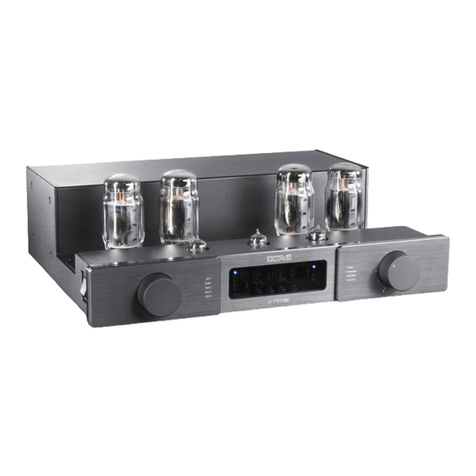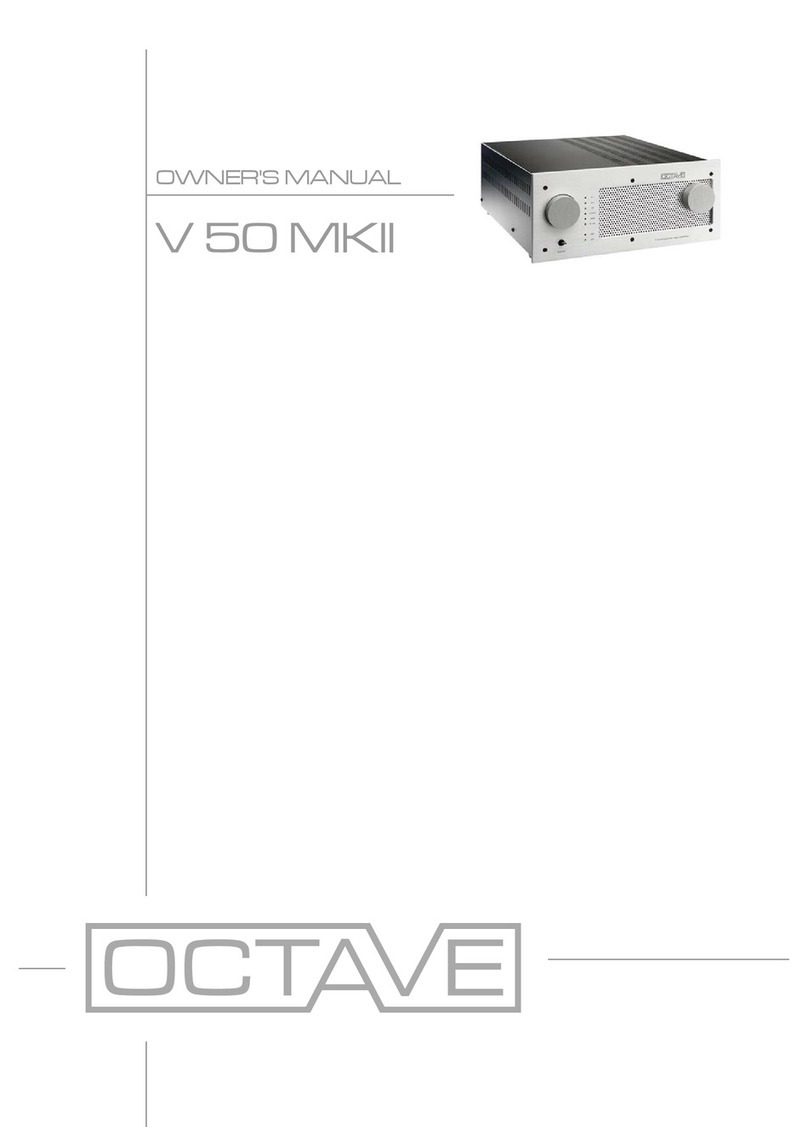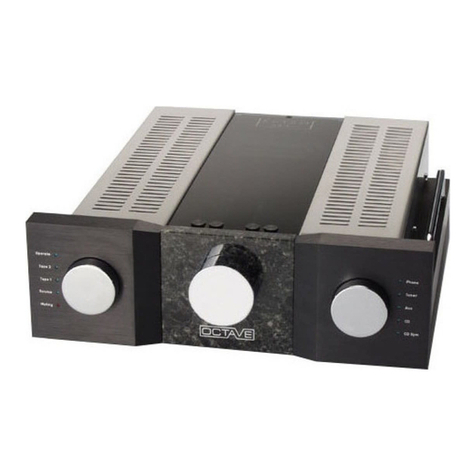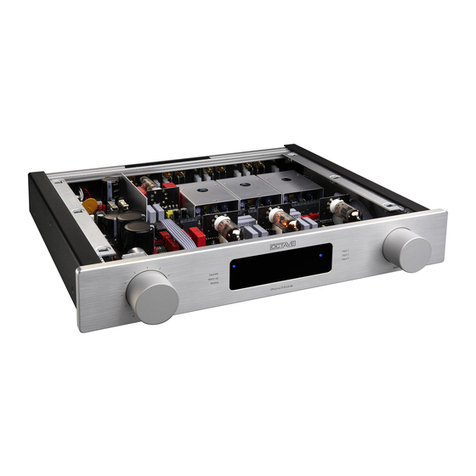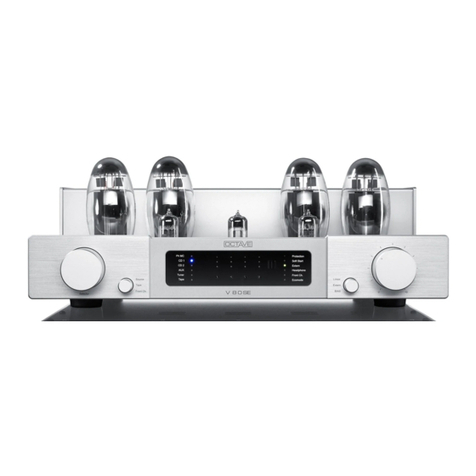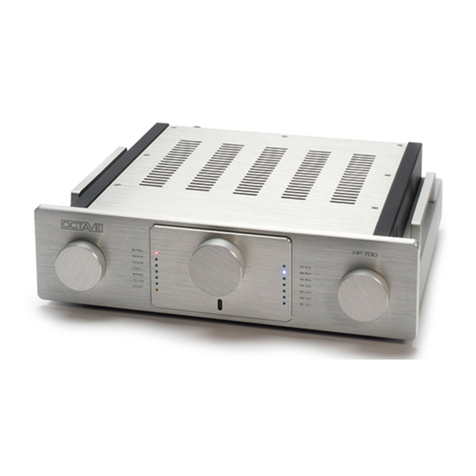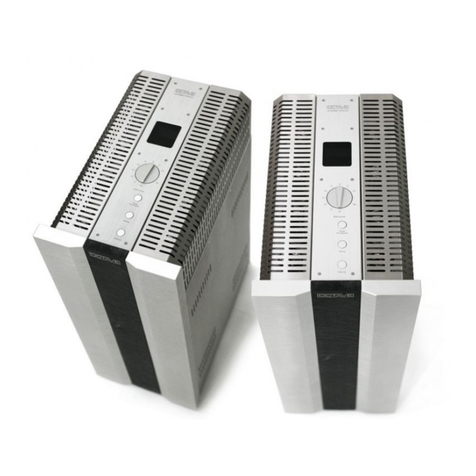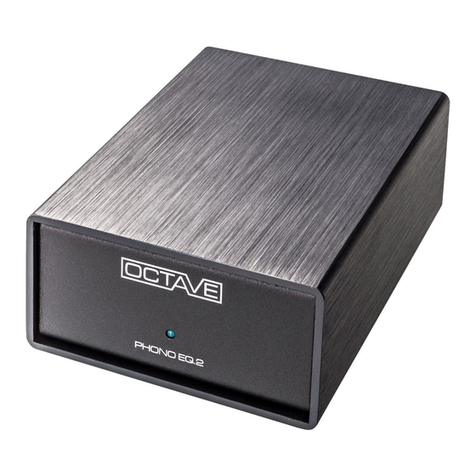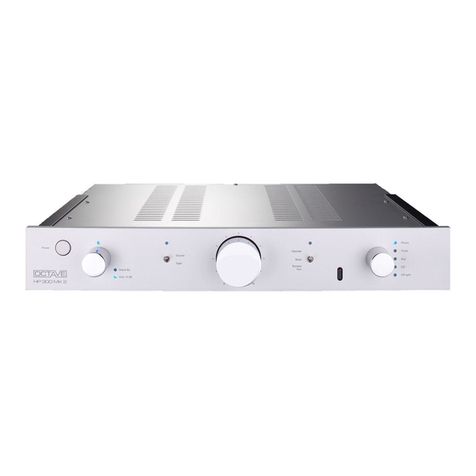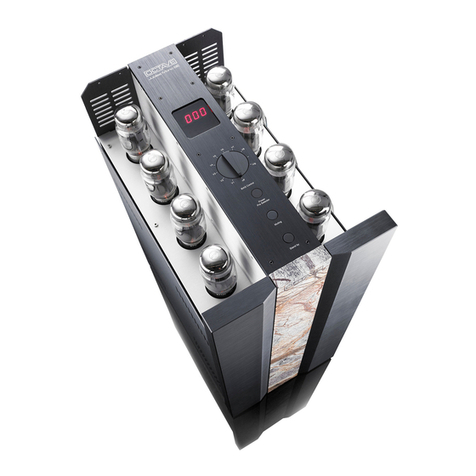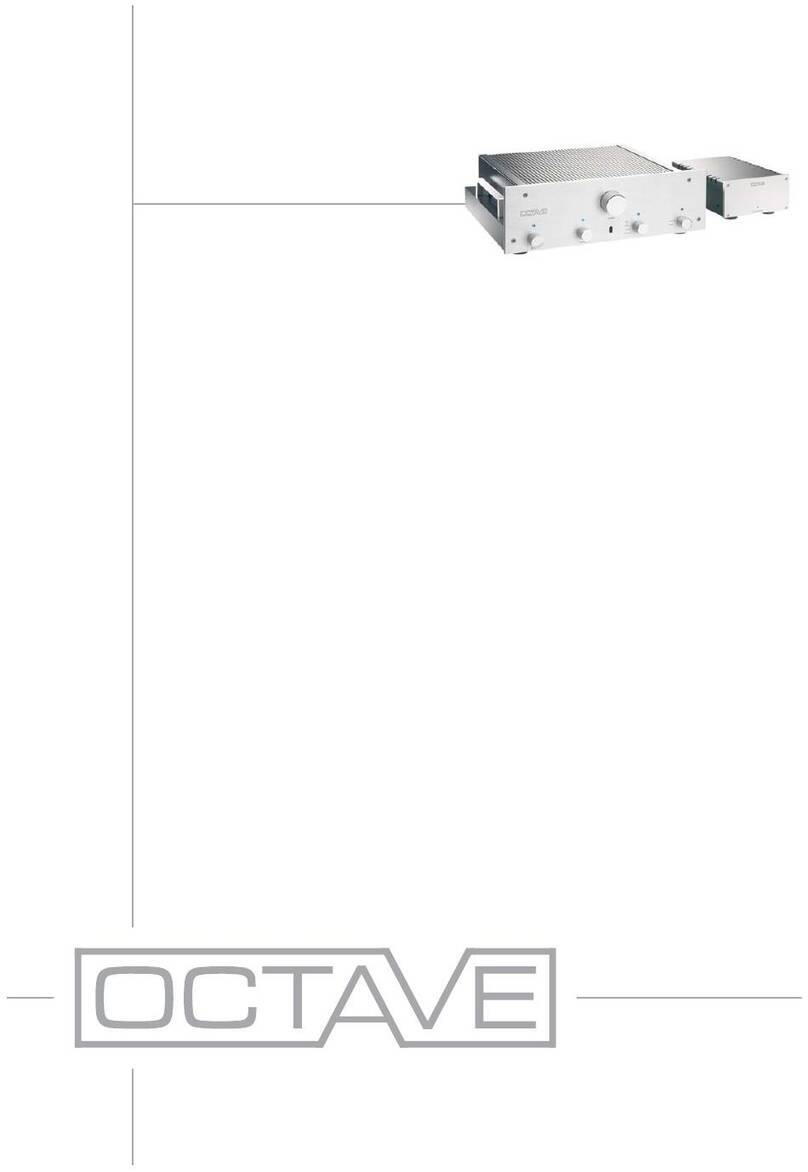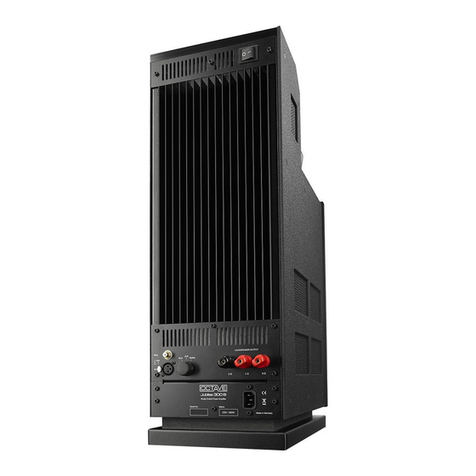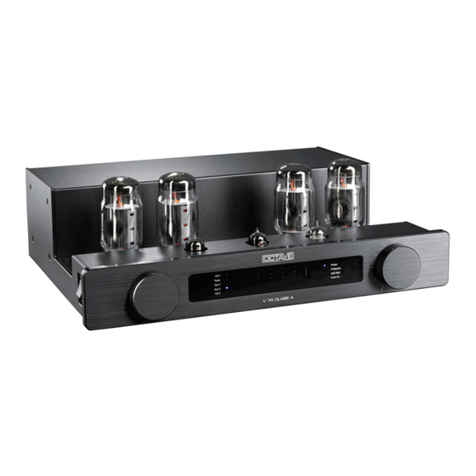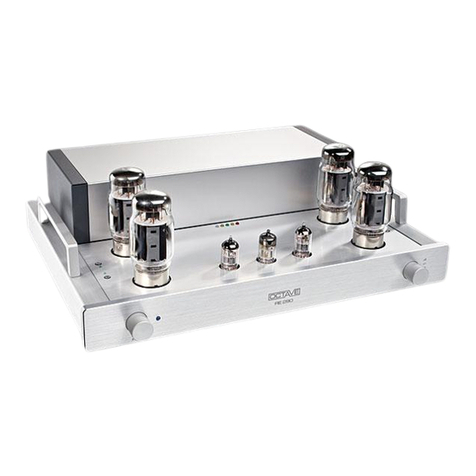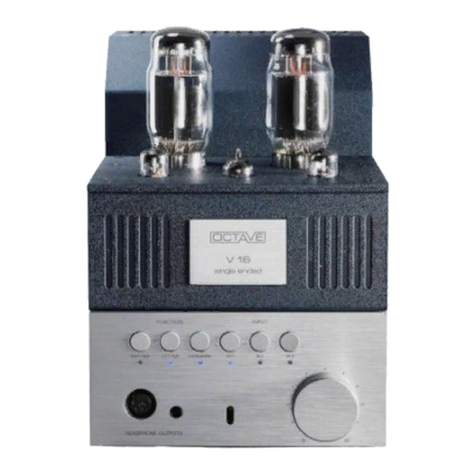
7
1. DESCRIPTION OF THE V 110
The Octave V 110 integrated amplifier is a push-pull pentode design delivering 2 x 110 W RMS
output power (into 4 ohm loads). As with all Octave models, all research and development (R&D)
and production has been conducted exclusively in-house, and the amplifier is comprehensively
safeguarded against user error and parts wear – including catastrophic power tube failure.
The V 110 is a new member of KT 120 based amplifiers containing our proprietary Amplifier
Technology. Ultra Low Noise and precise regulated Power Supply voltages ensure stable operation
independent of mains fluctuations and high frequency noise distortions of the mains voltage.
The V 110 improves upon the V 70 SE predecessor, with upgrades made in the amplification
stages as well as the power supply. Ultra-low leakage Tantalum electrolytic caps are now used
instead of Aluminum electrolytic caps in the driver circuit. The heater voltage of the driver tubes has
been precisely stabilized to reduce hum and noise that would otherwise be caused by the heater
system. The heater and the supply voltage are both controlled via the power management circuit.
The stabilization of the heater and power supply voltages ensures the stable, drift free operation in
the mains range of +/- 15%. Every output tube in the V 110 is protected against over-current and
other tube problems caused by aging.
BIAS Measurement
The V 110 is fixed BIAS, and utilizes external precision BIAS trim pots and LED confirmation which
allows the user to readily monitor the output tubes and simply correct their BIAS individually at the
front panel of the unit without the need of a micrometer let alone any special knowledge or tools –
just the supplied 3 mm flat-head screwdriver.
Black Box Option
The V 110 is fitted with a connector for the optional Octave “Black Box” capacitance modules –
available in normal and “Super” versions. The use of the Black Box or Super Black Box significantly
increases power supply capacitance to stabilize current delivery and reduce impedance interaction
of the load, thus improving dynamic range, separation, depth, soundstage size and articulation.
This enables optimizing the V 110 in respect to the speaker, which is a tremendous benefit if the
speaker is difficult to drive.
Input Section
The input section of the V 110 features five line level single ended Inputs with an optional internal
Phono board, one balanced Input and two single ended Outputs. One is a standard record output;
the other Pre-Out is a regulated preamplifier output. This output is buffered with an integrated
circuit to reduce the negative influence of any connected unit (typically an active subwoofer).
The Input labeled “Front Channel“is coupled with a relay that bypasses the volume regulator. The V
110 functions as a stereo amplifier the when the “Front Channel” Input position is selected.
Power Management and Ecomode
The V 110 input and output tube heaters as well as its high-voltage rails are logic-controlled to
ensure that the conduction of the output tubes as well as the input stage voltages are constantly
monitored and controlled by the Power Management System, which serves to protect the vital
internal parts (tubes, rectifier, electrolytic caps, switches, etc.) against excessive turn-on current.
This increases the lifetime of not only the tubes, but all power related components as each derives
benefit through this system.
The Ecomode serves to reduce heat and unnecessary power consumption when the unit is
switched on but not in use. After 9 minutes without receiving signal, the V 110 Ecomode is
activated, turning down the power. In this “sleep” mode, the V 110 draws only 20 W Idle current.
Therefore, the unit produces no heat while it remains switched on. When a music signal is once
again detected by the V 110, the Ecomode circuit will power the unit back on, with a short warm-
up/start-up delay (approximately 35 seconds) before the unit will operate.
The Ecomode also serves to increase the lifetime of the tubes, while providing an added benefit of
increased safety allowing the V 110 owner a level of security against any problems when leaving
the unit switched on.
